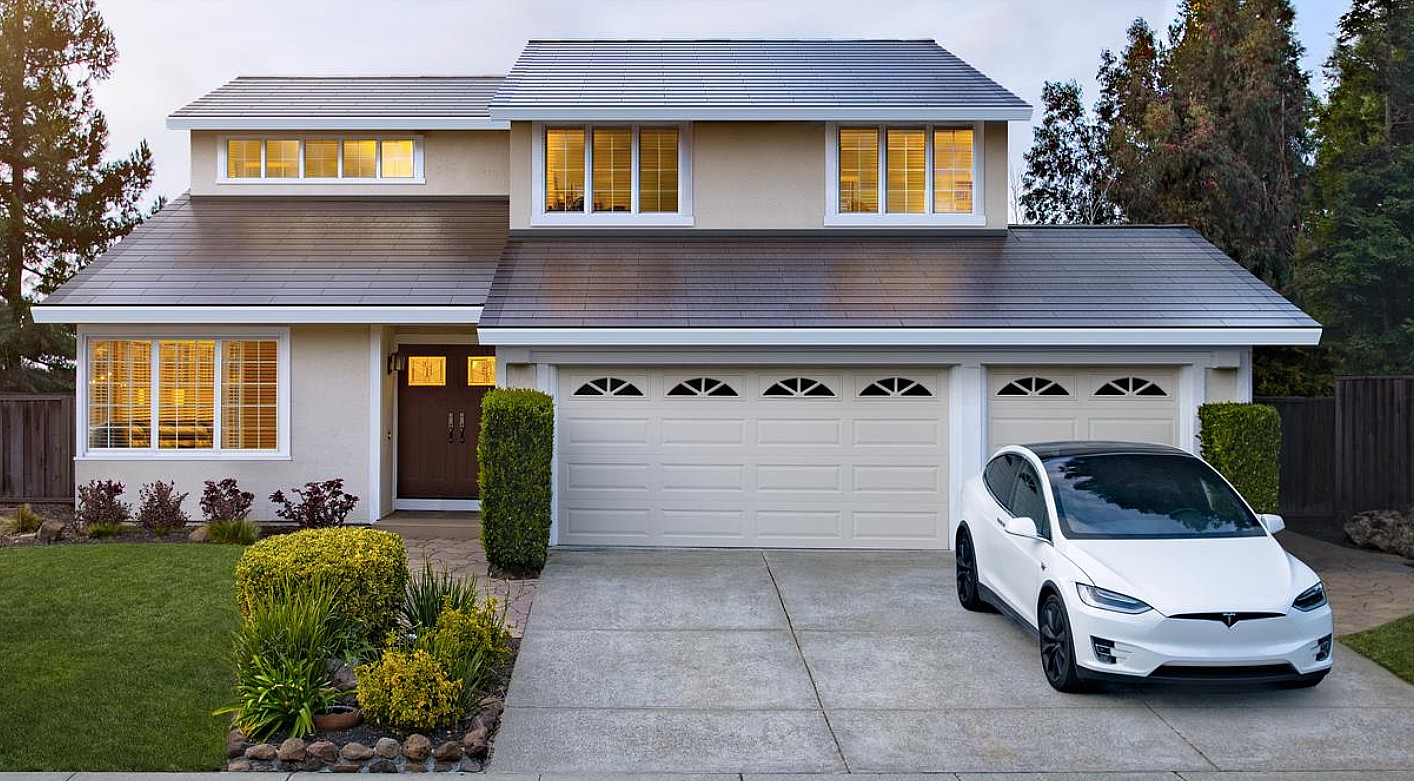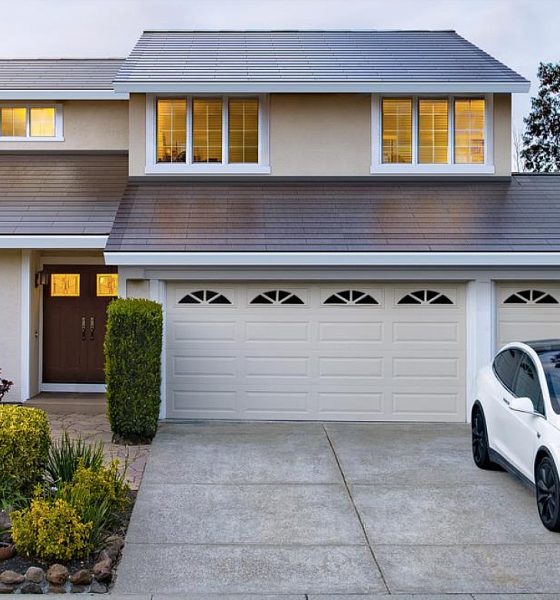

News
Tesla is testing the waters in Germany for the expansion of its energy utility business
During the second quarter earnings call, Elon Musk discussed the inherent potential of Tesla Energy. According to the CEO, Tesla Energy has a lot of room to grow simply because the utility sector is far larger than the automotive market. And if Musk’s recent visit to Germany and the company’s recent initiatives are any indication, it appears that Tesla is now testing the waters for a potential push into the country’s energy market.
Tesla has recently acquired a license that would allow it to trade electricity across western Europe. The electric car maker has also been surveying potential customers in Germany about the idea of using Tesla power in their vehicles. As noted in a Reuters report, consultants and energy industry executives believe that these strategies could set the stage for Tesla, perhaps with one or more partners, to expand its business to German’s utility sector. Such a move would be strategic, considering that the country is Europe’s largest power market.
Interestingly enough, the survey that Tesla sent to German customers asked about switching from an existing energy supplier to a new power provider. The questionnaires were sent out about a month after Tesla became a member of the Paris-based EPEX Spot power exchange, a platform utilized to trade intraday cross-border electricity. Questions from the survey, which were retrieved by Reuters, hinted at some of the company’s speculated technologies, such as vehicle-to-grid (V2G) capabilities for its vehicles.
“What would encourage you to switch from your existing energy supplier?” The survey noted, adding “Would you buy a Tesla photovoltaic system and home storage (Tesla Powerwall) if you could switch to a specially designed Tesla electricity tariff?” The survey also asked if customers would be willing to allow Tesla to control when their vehicles are charged.
Industry executives and consultants noted that such a system could allow the company to coincide charging with cheap electricity rates during off-peak hours. This could also open the doors for Tesla to utilize power gathered by its customers to help balance the power grid, an increasingly important service in Germany as the country starts to embrace more renewable solutions.
Granted, Tesla is only at the first stages of its energy business’ expansion, but the company has taken visible steps towards this goal in recent months. Back in May alone, Tesla applied for a license to supply power in the UK. This application was approved, paving the way for the company’s battery storage products and Autobidder software to test the waters in the UK’s utility sector.
Berthold Hannes, a consultant with 30 years of energy advisory experience, stated that an expansion into the utility sector actually makes sense for a business like Tesla. “The next and obvious step for Tesla is to get into production, especially of renewable power. Tesla could use its own locations, for example, the roofs of plants or the sites of charging points, and alternatively, or in addition, it could take stakes in solar plants or wind parks,” Hannes said.
In the Q2 2020 earnings call, Elon Musk explained that Tesla Energy plays a huge role in the company’s mission to accelerate the world’s shift to sustainability. “Tesla Energy will be roughly the same size as Tesla automotive. The energy business collectively is bigger than the automotive business. So you say like, how big is the energy sector? It’s bigger than automotive. And in order to achieve a sustainable energy future, we have to have sustainable energy generation,” the CEO said.

News
Tesla FSD fleet is nearing 7 billion total miles, including 2.5 billion city miles
As can be seen on Tesla’s official FSD webpage, vehicles equipped with the system have now navigated over 6.99 billion miles.

Tesla’s Full Self-Driving (Supervised) fleet is closing in on almost 7 billion total miles driven, as per data posted by the company on its official FSD webpage.
These figures hint at the massive scale of data fueling Tesla’s rapid FSD improvements, which have been quite notable as of late.
FSD mileage milestones
As can be seen on Tesla’s official FSD webpage, vehicles equipped with the system have now navigated over 6.99 billion miles. Tesla owner and avid FSD tester Whole Mars Catalog also shared a screenshot indicating that from the nearly 7 billion miles traveled by the FSD fleet, more than 2.5 billion miles were driven inside cities.
City miles are particularly valuable for complex urban scenarios like unprotected turns, pedestrian interactions, and traffic lights. This is also the difference-maker for FSD, as only complex solutions, such as Waymo’s self-driving taxis, operate similarly on inner-city streets. And even then, incidents such as the San Francisco blackouts have proven challenging for sensor-rich vehicles like Waymos.
Tesla’s data edge
Tesla has a number of advantages in the autonomous vehicle sector, one of which is the size of its fleet and the number of vehicles training FSD on real-world roads. Tesla’s nearly 7 billion FSD miles then allow the company to roll out updates that make its vehicles behave like they are being driven by experienced drivers, even if they are operating on their own.
So notable are Tesla’s improvements to FSD that NVIDIA Director of Robotics Jim Fan, after experiencing FSD v14, noted that the system is the first AI that passes what he described as a “Physical Turing Test.”
“Despite knowing exactly how robot learning works, I still find it magical watching the steering wheel turn by itself. First it feels surreal, next it becomes routine. Then, like the smartphone, taking it away actively hurts. This is how humanity gets rewired and glued to god-like technologies,” Fan wrote in a post on X.
News
Tesla starts showing how FSD will change lives in Europe
Local officials tested the system on narrow country roads and were impressed by FSD’s smooth, human-like driving, with some calling the service a game-changer for everyday life in areas that are far from urban centers.

Tesla has launched Europe’s first public shuttle service using Full Self-Driving (Supervised) in the rural Eifelkreis Bitburg-Prüm region of Germany, demonstrating how the technology can restore independence and mobility for people who struggle with limited transport options.
Local officials tested the system on narrow country roads and were impressed by FSD’s smooth, human-like driving, with some calling the service a game-changer for everyday life in areas that are far from urban centers.
Officials see real impact on rural residents
Arzfeld Mayor Johannes Kuhl and District Administrator Andreas Kruppert personally tested the Tesla shuttle service. This allowed them to see just how well FSD navigated winding lanes and rural roads confidently. Kruppert said, “Autonomous driving sounds like science fiction to many, but we simply see here that it works totally well in rural regions too.” Kuhl, for his part, also noted that FSD “feels like a very experienced driver.”
The pilot complements the area’s “Citizen Bus” program, which provides on-demand rides for elderly residents who can no longer drive themselves. Tesla Europe shared a video of a demonstration of the service, highlighting how FSD gives people their freedom back, even in places where public transport is not as prevalent.
What the Ministry for Economic Affairs and Transport says
Rhineland-Palatinate’s Minister Daniela Schmitt supported the project, praising the collaboration that made this “first of its kind in Europe” possible. As per the ministry, the rural rollout for the service shows FSD’s potential beyond major cities, and it delivers tangible benefits like grocery runs, doctor visits, and social connections for isolated residents.
“Reliable and flexible mobility is especially vital in rural areas. With the launch of a shuttle service using self-driving vehicles (FSD supervised) by Tesla in the Eifelkreis Bitburg-Prüm, an innovative pilot project is now getting underway that complements local community bus services. It is the first project of its kind in Europe.
“The result is a real gain for rural mobility: greater accessibility, more flexibility and tangible benefits for everyday life. A strong signal for innovation, cooperation and future-oriented mobility beyond urban centers,” the ministry wrote in a LinkedIn post.
News
Tesla China quietly posts Robotaxi-related job listing
Tesla China is currently seeking a Low Voltage Electrical Engineer to work on circuit board design for the company’s autonomous vehicles.

Tesla has posted a new job listing in Shanghai explicitly tied to its Robotaxi program, fueling speculation that the company is preparing to launch its dedicated autonomous ride-hailing service in China.
As noted in the listing, Tesla China is currently seeking a Low Voltage Electrical Engineer to work on circuit board design for the company’s autonomous vehicles.
Robotaxi-specific role
The listing, which was shared on social media platform X by industry watcher @tslaming, suggested that Tesla China is looking to fill the role urgently. The job listing itself specifically mentions that the person hired for the role will be working on the Low Voltage Hardware team, which would design the circuit boards that would serve as the nervous system of the Robotaxi.
Key tasks for the role, as indicated in the job listing, include collaboration with PCB layout, firmware, mechanical, program management, and validation teams, among other responsibilities. The role is based in Shanghai.
China Robotaxi launch
China represents a massive potential market for robotaxis, with its dense urban centers and supportive policies in select cities. Tesla has limited permission to roll out FSD in the country, though despite this, its vehicles have been hailed as among the best in the market when it comes to autonomous features. So far, at least, it appears that China supports Tesla’s FSD and Robotaxi rollout.
This was hinted at in November, when Tesla brought the Cybercab to the 8th China International Import Expo (CIIE) in Shanghai, marking the first time that the autonomous two-seater was brought to the Asia-Pacific region. The vehicle, despite not having a release date in China, received a significant amount of interest among the event’s attendees.








